Abstract
Green, J. H. (Michigan State University, East Lansing), and H. L. Sadoff. Comparison of soluble reduced nicotinamide adenine dinucleotide oxidases from cells and spores of Clostridium botulinum. J. Bacteriol. 89:1499–1505. 1965.—The properties of purified reduced nicotinamide adenine dinucleotide (NADH2) oxidases from cells and spores of Clostridium botulinum 62-A have been studied to determine whether they are the same or different proteins. The spore NADH2 oxidase was very heat-stable, whereas the vegetative enzyme was readily denatured at 70 C. The spore oxidase exhibited less affinity for the substrate than did the vegetative protein, but possessed a tightly bound cofactor. Atabrine was a noncompetitive inhibitor for both enzymes, but was less inhibitory to the spore NADH2 oxidase. The enzymes could be separated from each other by gel filtration or chromatography on a diethylaminoethyl-cellulose column. The molecular weight of the spore oxidase was estimated to be 200,000 or greater, whereas that of the vegetative enzyme was 100,000 or less. Neither NADH2 oxidase would cross-react with its heterologous antibody in a precipitation reaction. The conclusion drawn from this investigation is that the two NADH2 oxidases are distinctly different proteins.
Full text
PDF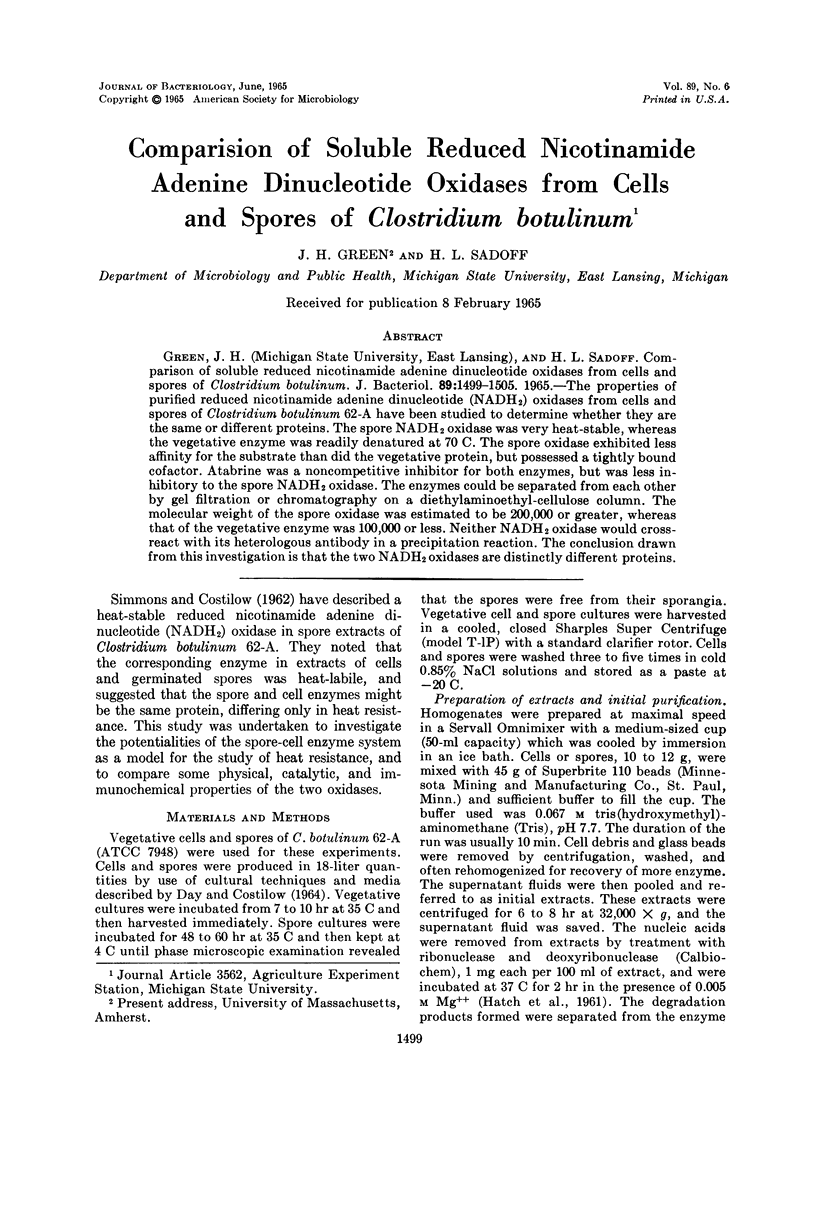
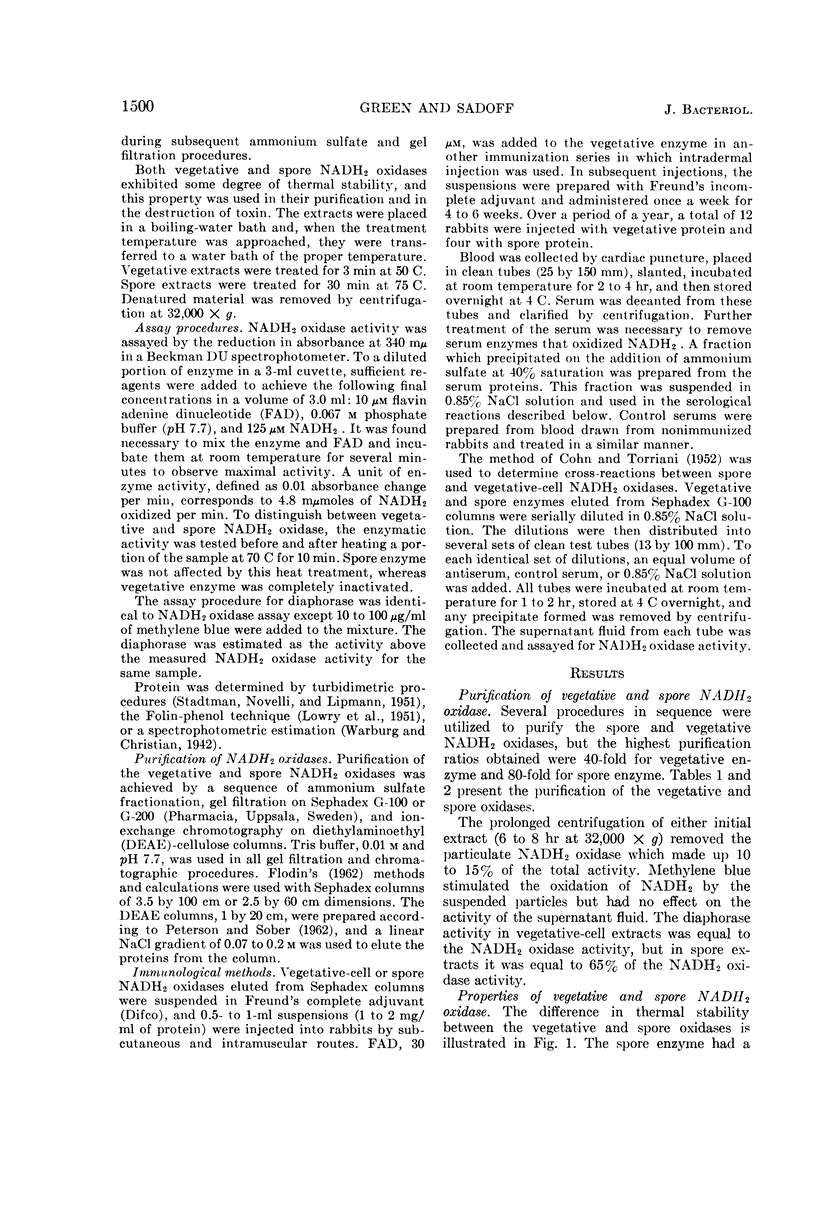
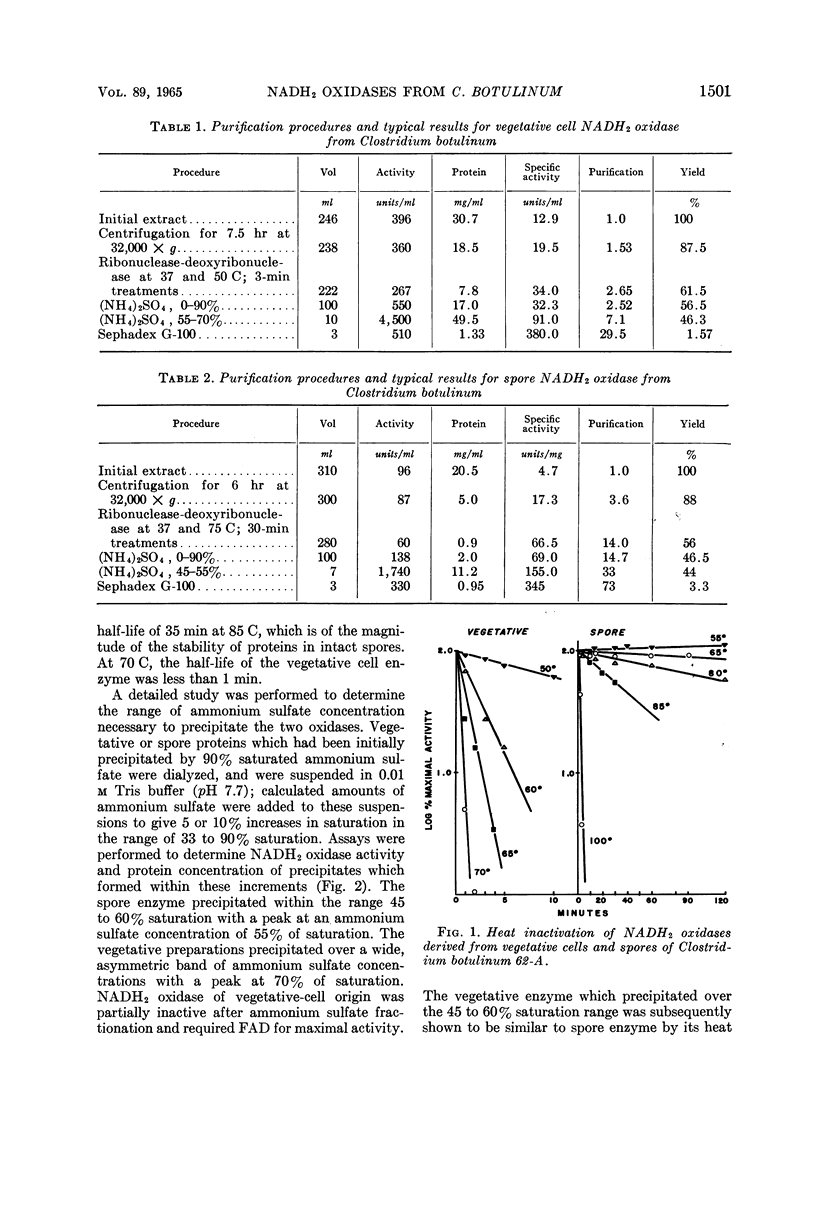
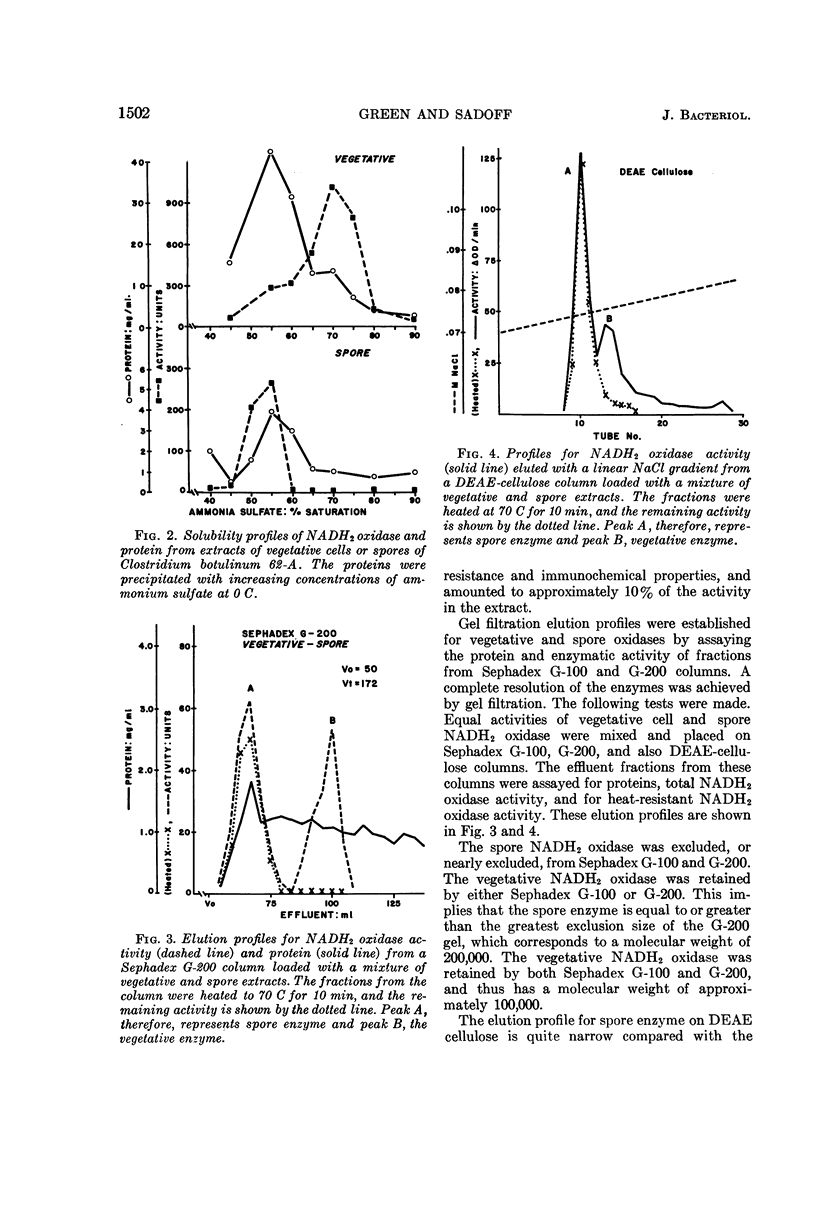
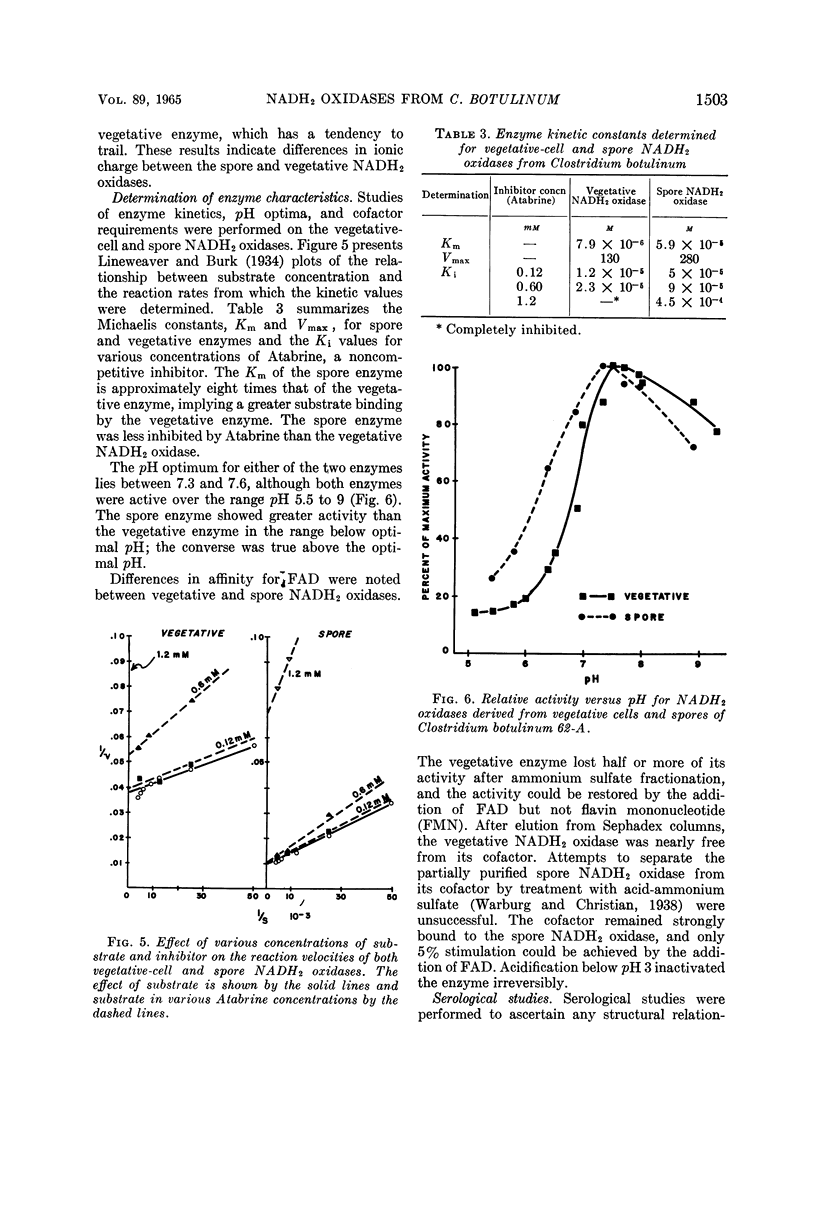
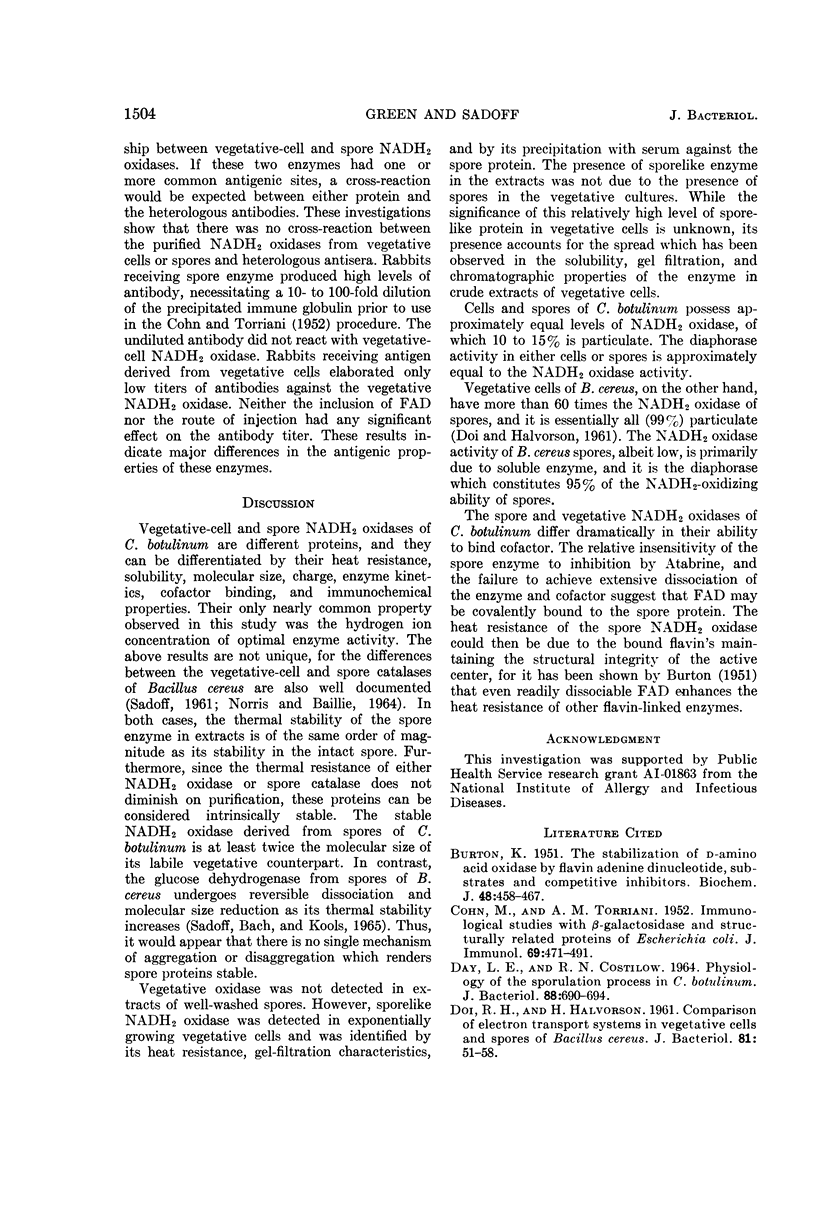
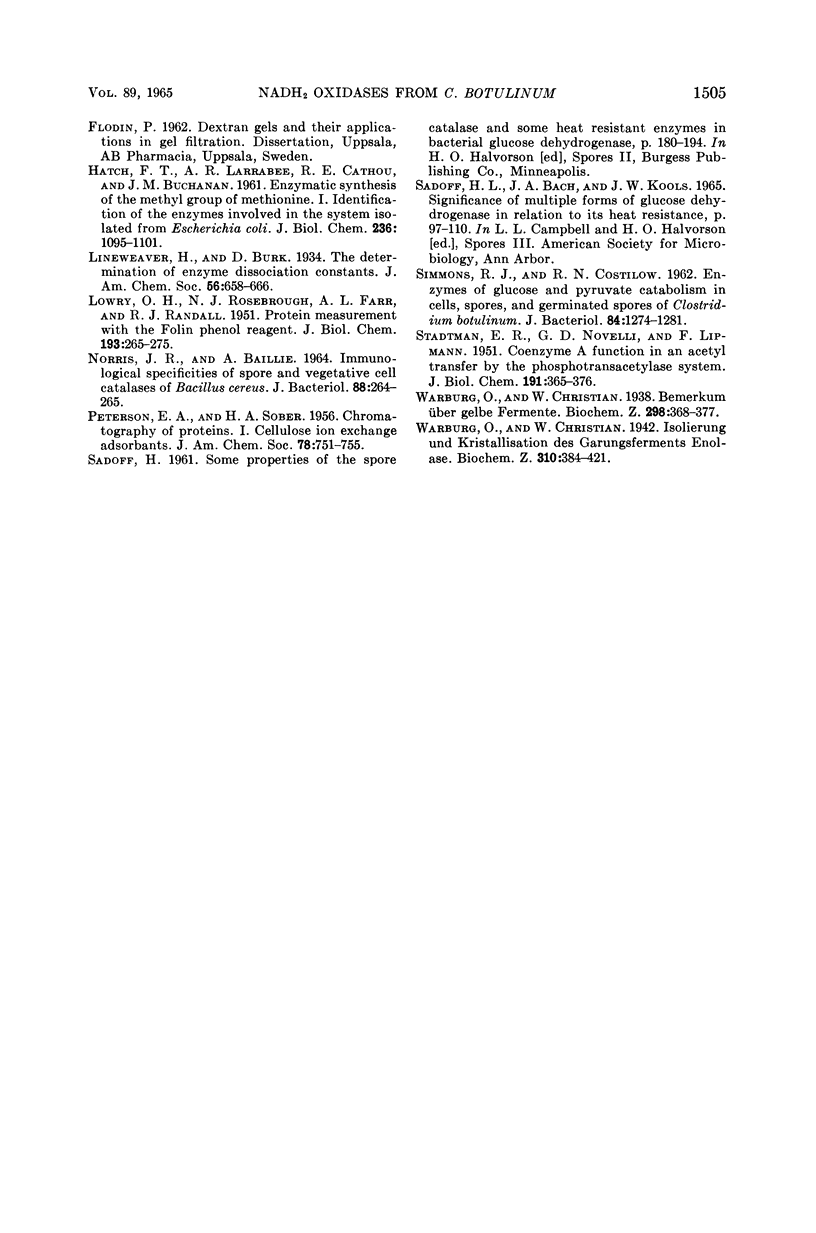
Selected References
These references are in PubMed. This may not be the complete list of references from this article.
- BURTON K. The stabilization of D-amino acid oxidase by flavin-adenine dinucleotide, substrates and competitive inhibitors. Biochem J. 1951 Apr;48(4):458–467. doi: 10.1042/bj0480458. [DOI] [PMC free article] [PubMed] [Google Scholar]
- COHN M., TORRIANI A. M. Immunochemical studies with the beta-galactosidase and structurally related proteins of Escherichia coli. J Immunol. 1952 Nov;69(5):471–491. [PubMed] [Google Scholar]
- DAY L. E., COSTILOW R. N. PHYSIOLOGY OF THE SPORULATION PROCESS IN CLOSTRIDIUM BOTULINUM. I. CORRELATION OF MORPHOLOGICAL CHANGES WITH CATABOLIC ACTIVITIES, SYNTHESIS OF DIPICOLINIC ACID, AND DEVELOPMENT OF HEAT RESISTANCE. J Bacteriol. 1964 Sep;88:690–694. doi: 10.1128/jb.88.3.690-694.1964. [DOI] [PMC free article] [PubMed] [Google Scholar]
- DOI R. H., HALVORSON H. Comparison of electron transport systems in vegetative cells and spores of Bacillus cereus. J Bacteriol. 1961 Jan;81:51–58. doi: 10.1128/jb.81.1.51-58.1961. [DOI] [PMC free article] [PubMed] [Google Scholar]
- HATCH F. T., LARRABEE A. R., CATHOU R. E., BUCHANAN J. M. Enzymatic synthesis of the methyl group of methionine. I. Identification of the enzymes and cofactors involved in the system isolated from Escherichia coli. J Biol Chem. 1961 Apr;236:1095–1101. [PubMed] [Google Scholar]
- LOWRY O. H., ROSEBROUGH N. J., FARR A. L., RANDALL R. J. Protein measurement with the Folin phenol reagent. J Biol Chem. 1951 Nov;193(1):265–275. [PubMed] [Google Scholar]
- NORRIS J. R., BAILLIE A. IMMUNOLOGICAL SPECIFICITIES OF SPORE AND VEGETATIVE CELL CATALASES OF BACILLUS CEREUS. J Bacteriol. 1964 Jul;88:264–265. doi: 10.1128/jb.88.1.264-265.1964. [DOI] [PMC free article] [PubMed] [Google Scholar]
- SIMMONS R. J., COSTILOW R. N. Enzymes of glucose and pyruvate catabolism in cells, spores, and germinated spores of Clostridium botulinum. J Bacteriol. 1962 Dec;84:1274–1281. doi: 10.1128/jb.84.6.1274-1281.1962. [DOI] [PMC free article] [PubMed] [Google Scholar]
- STADTMAN E. R., NOVELLI G. D., LIPMANN F. Coenzyme A function in and acetyl transfer by the phosphotransacetylase system. J Biol Chem. 1951 Jul;191(1):365–376. [PubMed] [Google Scholar]


